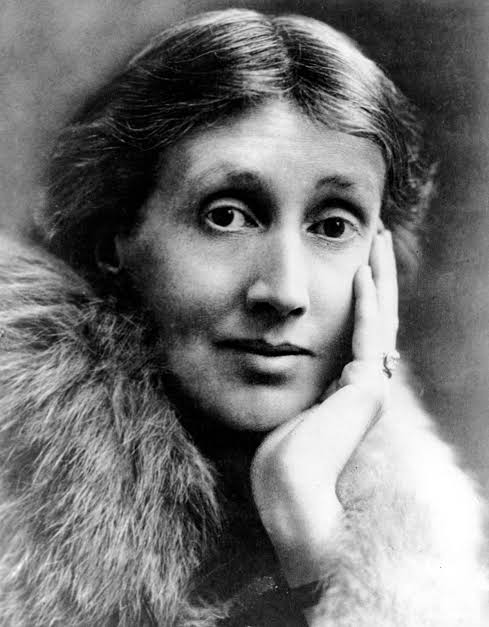To the Lighthouse SummaryVirginia Woolf wrote a book titled To the Lighthouse in 1927. The Ramsay family and their trips to Scotland's Isle of Skye between 1910 and 1920 are essential to the story. The plot of To the Lighthouse is subordinate to its philosophical contemplation, continuing and expanding the tradition of modernist authors like Marcel Proust and James Joyce. The work, which is frequently cited as a crucial illustration of the literary device of multiple focalizations, has very little dialogue and almost no actual action; the majority of the text is written as ideas and observations. Three intensely charged insights into the life of the Ramsay family, who reside in a summer home off the rugged Scottish coast, make up To the Lighthouse. 
There are the devoted Mrs. Ramsay, the learned Mr. Ramsay, their eight kids, and many Christmas guests. Virginia Woolf addresses conflicts and allegiances by using Mr. Ramsay's ostensibly insignificant decision to postpone a trip to a nearby lighthouse as an example. She also demonstrates how the small pleasures and subtle tragedies of daily life could last a lifetime. The book highlights adult relationships and brings back childhood feelings. Loss, subjectivity, the essence of art, and the issue of perception are just a few of the book's many tropes and themes. To the Lighthouse was ranked No. 15 on the Modern Library's 1998 list of the top 100 English-language books published during the 20th century. The book was named one of TIME magazine's top 100 English-language books since 1923 in 2005. In the year 2023, the book became publicly available. About The Author
English author Virginia Woolf was born on 25 January 1882. She is regarded as one of the most significant modernist writers of the 20th century and a pioneer in the use of stream of consciousness in fiction. The seventh child of Julia Prinsep Jackson and Leslie Stephen, Woolf was raised in a wealthy South Kensington, London, family along with modernist painter Vanessa Bell. She was the seventh child of a blended family of eight. Beginning at a young age, she received home education in Victorian and English classics. She studied classics and history in the Ladies' Department of King's College London from 1897 to 1901, where she also met pioneers in the fight for women's rights and early reformers of women's higher education. In 1900, Woolf started writing professionally with the support of her father. The Stephen family relocated from Kensington to the more free-spirited Bloomsbury after her father passed away in 1904, where they joined forces with the brothers' intellectual friends to create the literary and artistic Bloomsbury Group. She wed Leonard Woolf in 1912, and the two of them formed the Hogarth Press in 1917, which published a lot of her writing. Characters
Plot SummaryPart IThe WindowOn the Isle of Skye in the Hebrides, the Ramsays' vacation home, the book takes place. Assuring her son James that they should be able to visit the lighthouse the following day, Mrs. Ramsay opens the section. Mr. Ramsay disputes this forecast and declares that the weather won't be clear. Between Mr. and Mrs. Ramsay and Mr. Ramsay and James, as well as between them, there is some friction as a result of this opinion. A number of times in this section, particularly while discussing the connection between Mr. and Mrs. Ramsay, this specific occurrence is brought up. Numerous friends and coworkers are present at the home with the Ramsays and their eight children. One of these acquaintances, Lily Briscoe, attempts to paint Mrs. Ramsay and James as a young, inexperienced painter at the beginning of the book. The statements of Charles Tansley, a different guest, who says that women cannot paint or write, are a major source of Briscoe's misgivings throughout the book. Tansley himself is a fan of Ramsay, a professor of philosophy, and Ramsay's scholarly writings. The section ends with a sizable supper gathering. When a guest poet named Augustus Carmichael requests a second helping of soup, Mr. Ramsay comes dangerously close to yelling at him. When she has set up an engagement between two acquaintances, Paul Rayley and Minta Doyle, they arrive late to dinner because Minta has misplaced her grandmother's brooch on the beach, and Mrs. Ramsay is already feeling out of sorts. Part IITime PassesA sense of time passing, absence, and mortality is conveyed in the second section, "Time passes." The First World War begins and finishes over the course of ten years. Prue dies from pregnancy-related difficulties, and Andrew is killed in battle, all of which result in the death of Mrs. Ramsay and two of her children. Without his wife to encourage and console him during his episodes of worry and agony over the duration of his philosophical endeavor, Mr. Ramsay is left on his own. This portion is told from an omniscient point of view, with brief passages from Mrs. McNab's perspective. Since Mrs. McNab has been a part of the Ramsay family home from the beginning, she can clearly see how things have changed while the summer home has been vacant Part IIIThe LighthouseTen years after the events of Part I, the remaining Ramsays and other visitors return to their summer cottage in the book's concluding chapter, "The Lighthouse." With son James and daughters Cam(illa) and James, Mr. Ramsay now intends to make the long-delayed trip to the lighthouse (the other Ramsay children are essentially left out of the final portion). The kids aren't quite ready, so the vacation almost doesn't happen, but they do finally go. The kids don't say anything as they move forward in protest at their father for making them go. James manages to keep the sailing boat steady, and instead of the criticism he has grown to expect from his father, he hears praise, creating a rare moment of father - son understanding. Cam also experiences a change in perspective towards her father, going from bitterness to eventual adoration The son of the ship's captain, Macalister, who is also a fisherman, travels with them. The damaged fish is thrown back into the water as the son cuts a piece of flesh from a fish he has captured to use as bait. Lily makes an attempt to finish the painting she has been working on since the beginning of the book as they head toward the lighthouse. In an effort to arrive at an objective reality about Mrs. Ramsay and life in general, she carefully weighs the many impressions she has of Mrs. and Mr. Ramsay from 10 years ago. She learns that the realisation of her vision is more important to her than the thought of leaving some form of legacy in her work after completing the painting (just as the sailing party arrives at the lighthouse) and realising that it fulfils her.
Next Topic#
|
 For Videos Join Our Youtube Channel: Join Now
For Videos Join Our Youtube Channel: Join Now
Feedback
- Send your Feedback to [email protected]
Help Others, Please Share









